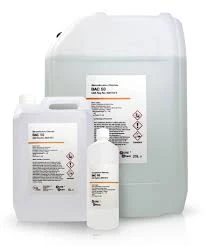Understanding Sodium HEDP Applications and Benefits in Industrial Water Treatment
Understanding Sodium HEDP Applications and Benefits
Sodium Hydroxyethylidene Diphosphonic Acid, commonly known as Sodium HEDP, is a vital organic compound that has gained significant attention in various industries due to its myriad applications and unique properties. With the increasing demand for effective scale inhibitors, corrosion inhibitors, and chelating agents, Sodium HEDP has emerged as a key player in both industrial and environmental chemistry.
What is Sodium HEDP?
Sodium HEDP is a phosphonic acid derivative that functions effectively in the prevention of scale deposition and corrosion, particularly in water treatment and oil production industries. Its chemical structure, which includes two phosphonate groups, allows it to bind with metal ions, thereby reducing the rate of scaling in various systems. The sodium salt form enhances its solubility and effectiveness in various aqueous environments, making it suitable for a wide array of applications.
Industrial Applications
Understanding Sodium HEDP Applications and Benefits
2. Oil and Gas Industry In the oil and gas sector, Sodium HEDP is utilized to control scales that form during extraction and processing. Scaling can lead to blockages and decreased productivity, making the use of effective inhibitors essential for operational efficiency. Sodium HEDP not only helps in managing scale but also provides corrosion protection in pipelines and equipment subjected to harsh chemical environments.
sodium hedp 钠hedp

3. Household and Industrial Cleaners Due to its chelating properties, Sodium HEDP is also found in various household and industrial cleaning products. It helps to enhance the effectiveness of detergents by softening water and preventing the precipitation of mineral salts. This application is particularly beneficial in environments with hard water, ensuring that cleaning agents work more effectively.
4. Agriculture Another area where Sodium HEDP has shown promise is in agriculture, particularly in fertilizers and pesticides. It enhances the bioavailability of nutrients and aids in the absorption of minerals, promoting healthier crop growth.
Environmental Considerations
The environmental impact of chemical compounds is an increasing concern in today’s world, and Sodium HEDP is no exception. It is generally regarded as environmentally friendly, especially compared to traditional phosphates that can contribute to eutrophication in water bodies. Sodium HEDP is biodegradable and poses a lower risk to aquatic life, making it a safer alternative in various applications. Regulatory bodies are increasingly favoring such compounds, leading to their broader acceptance in industrial and agricultural practices.
Conclusion
Sodium HEDP is a multifaceted compound with crucial roles in diverse industries ranging from water treatment and oil extraction to agriculture and cleaning products. Its ability to inhibit scale formation and corrosion while being environmentally friendly makes it a desirable choice for many applications. As industries continue to seek efficient and sustainable solutions, the demand for Sodium HEDP and similar compounds is expected to grow.
In summary, understanding the chemical and practical benefits of Sodium HEDP is essential for harnessing its potential. Continued research and development in this area may uncover even more uses and innovative solutions to existing industry challenges, forging a path towards a more sustainable and effective future in chemical applications.
-
Water Treatment with Flocculant Water TreatmentNewsJun.12,2025
-
Polymaleic AnhydrideNewsJun.12,2025
-
Polyaspartic AcidNewsJun.12,2025
-
Enhance Industrial Processes with IsothiazolinonesNewsJun.12,2025
-
Enhance Industrial Processes with PBTCA SolutionsNewsJun.12,2025
-
Dodecyldimethylbenzylammonium Chloride SolutionsNewsJun.12,2025





